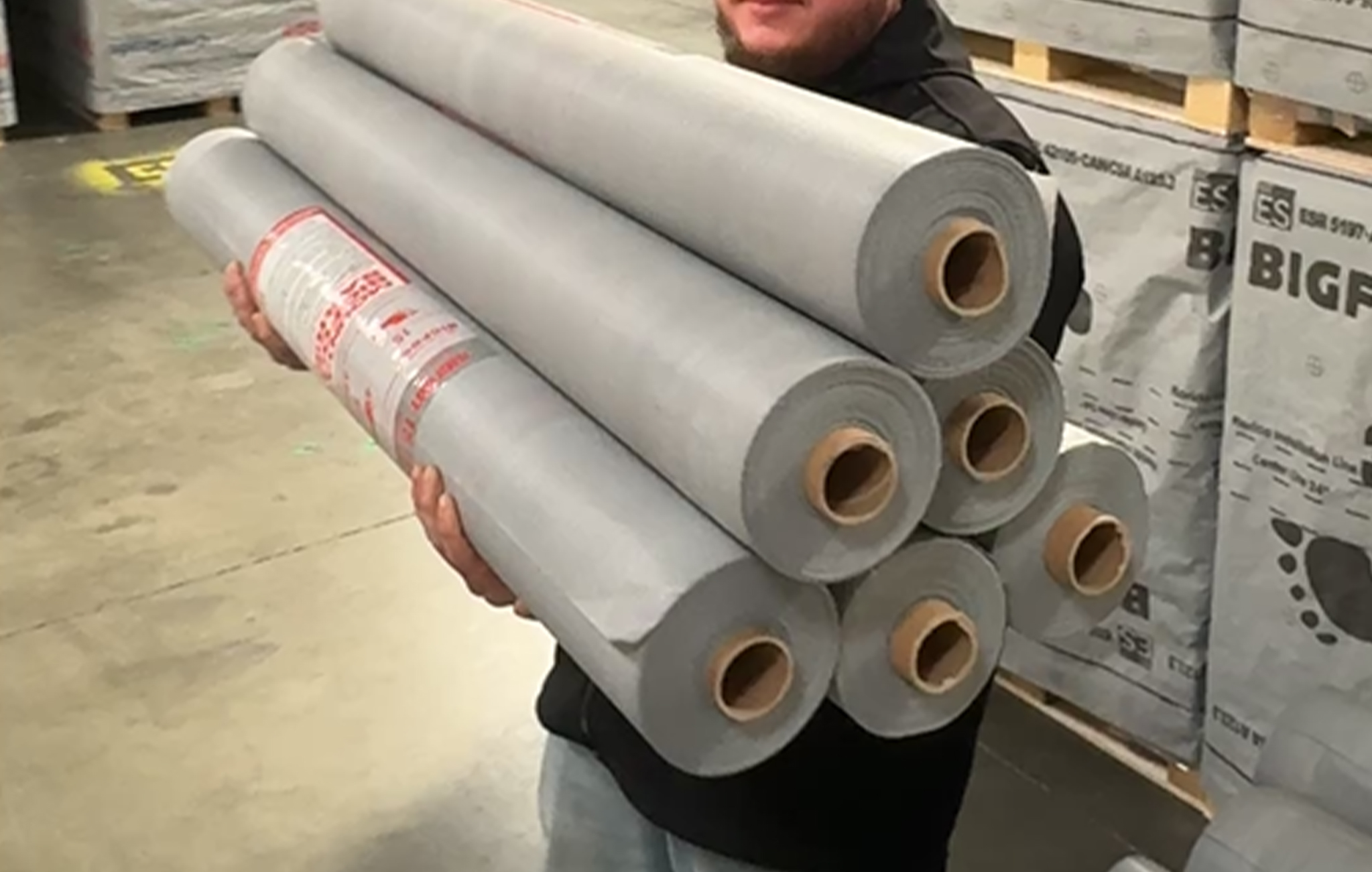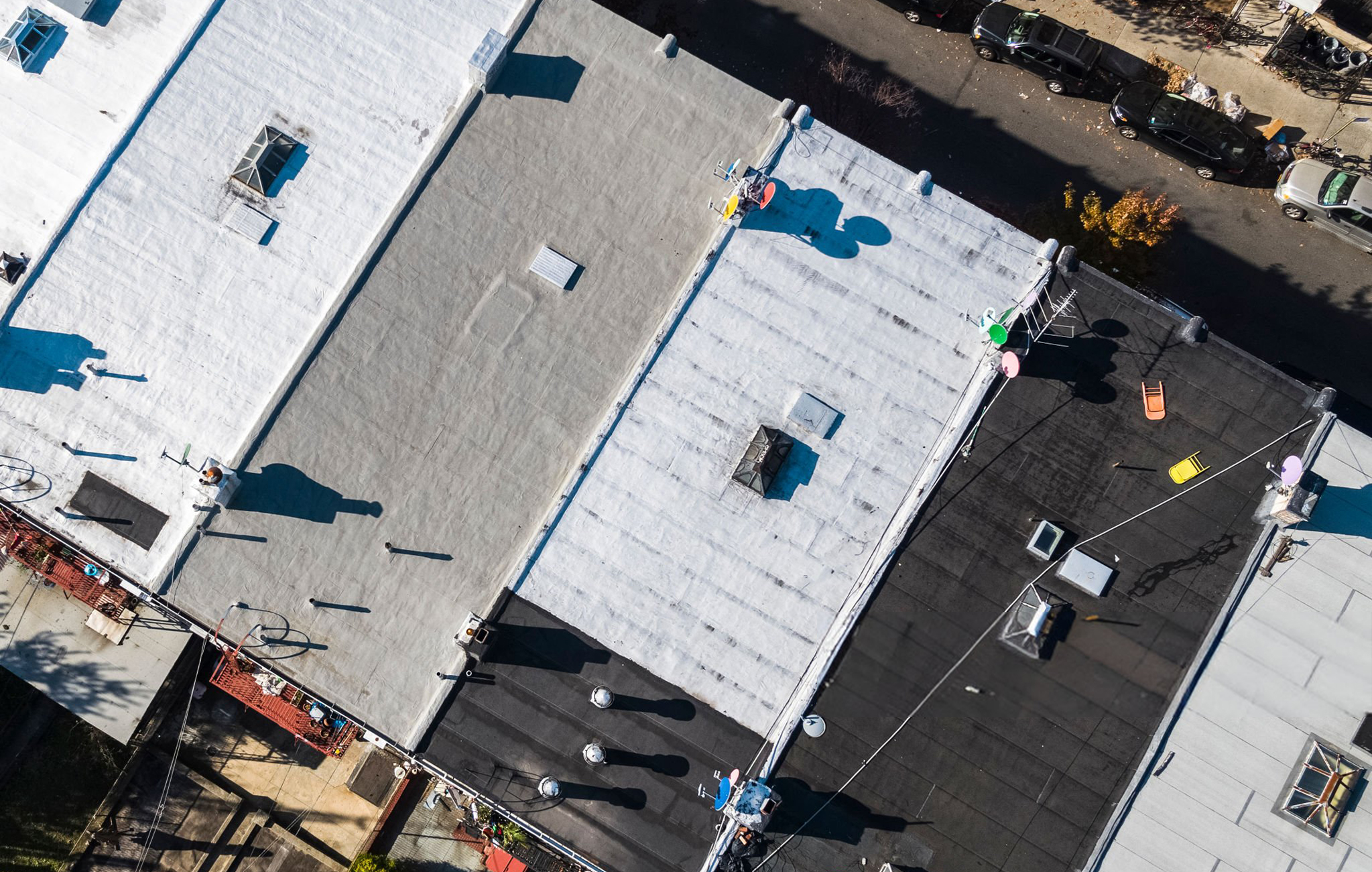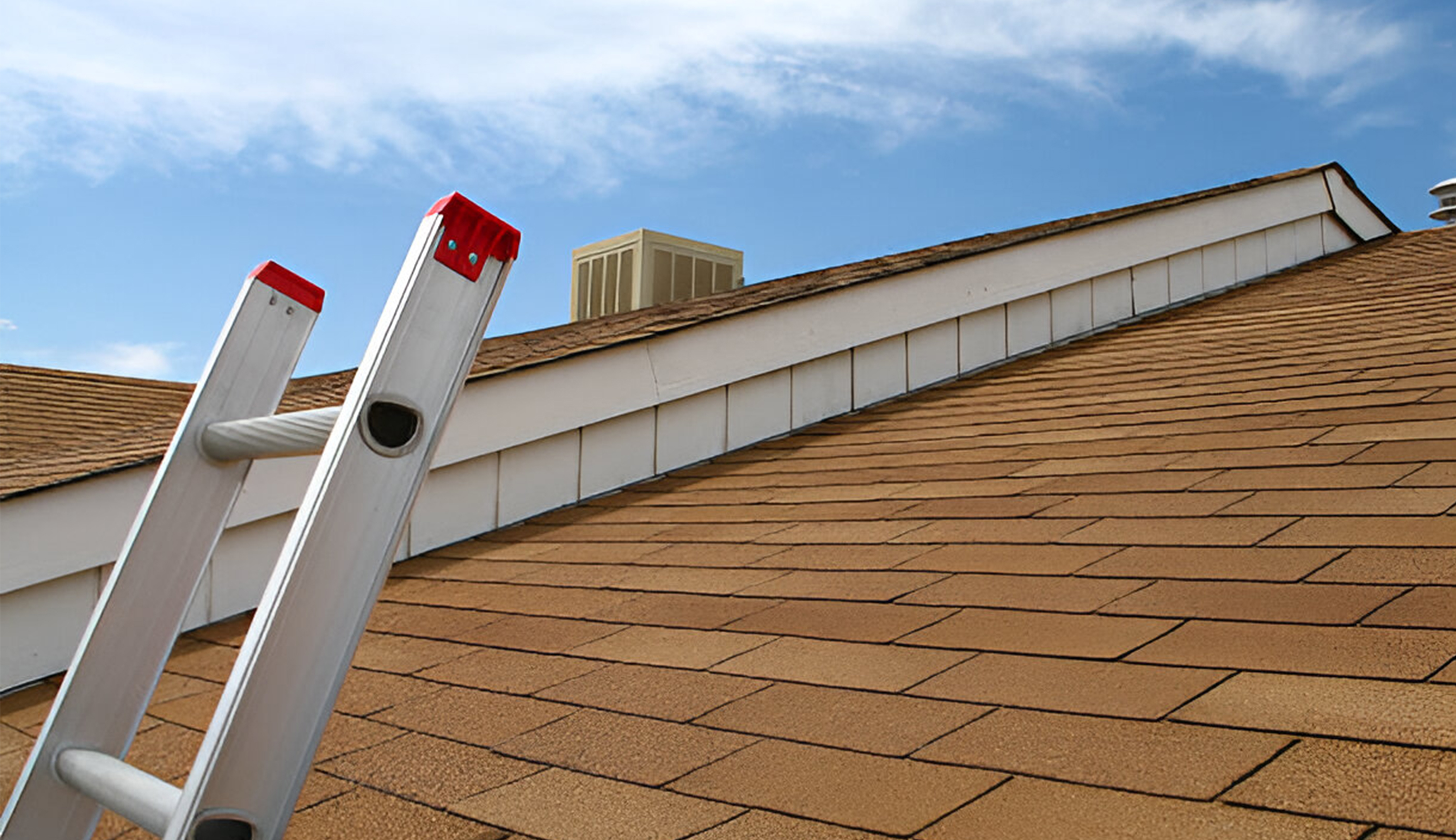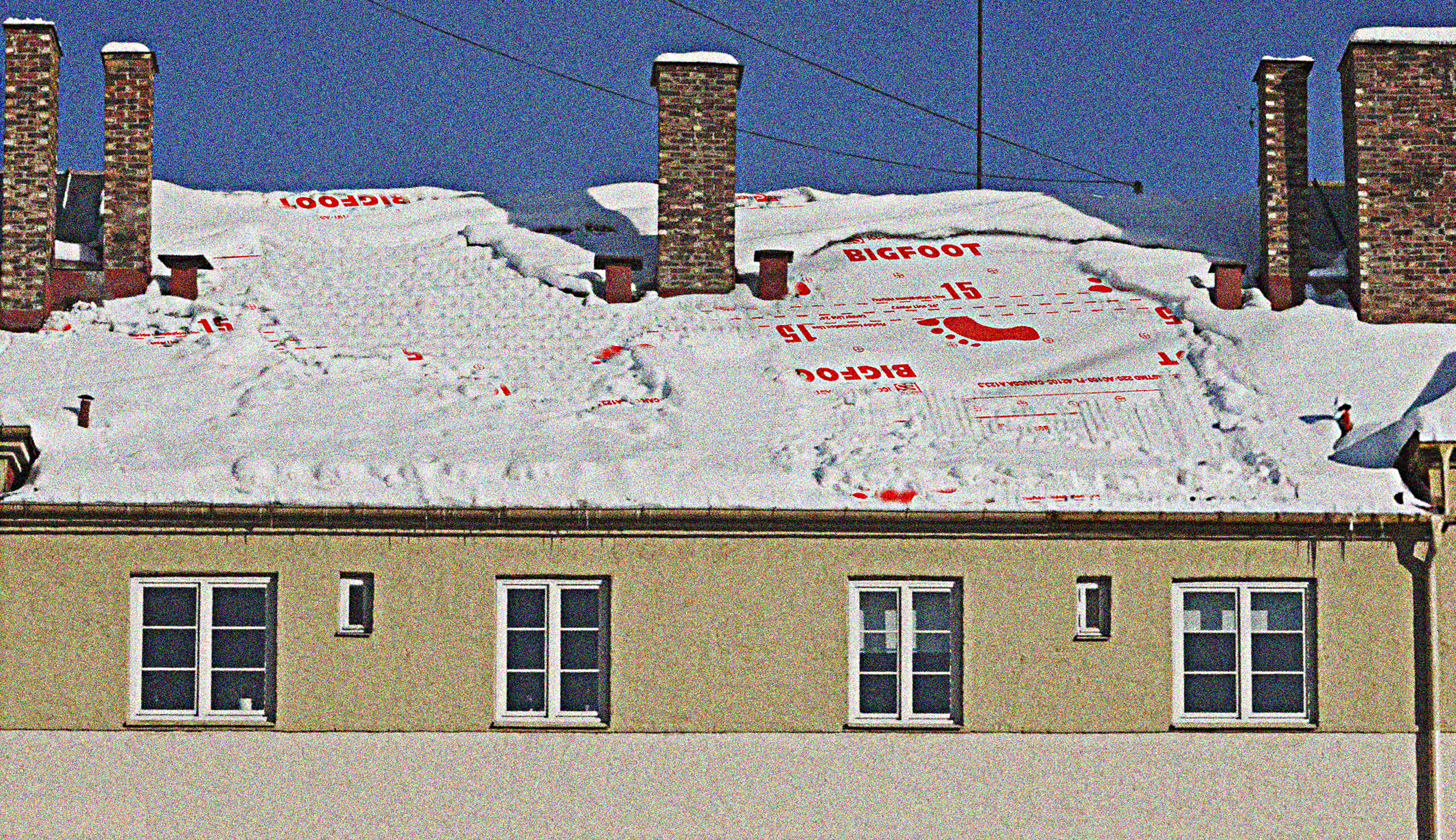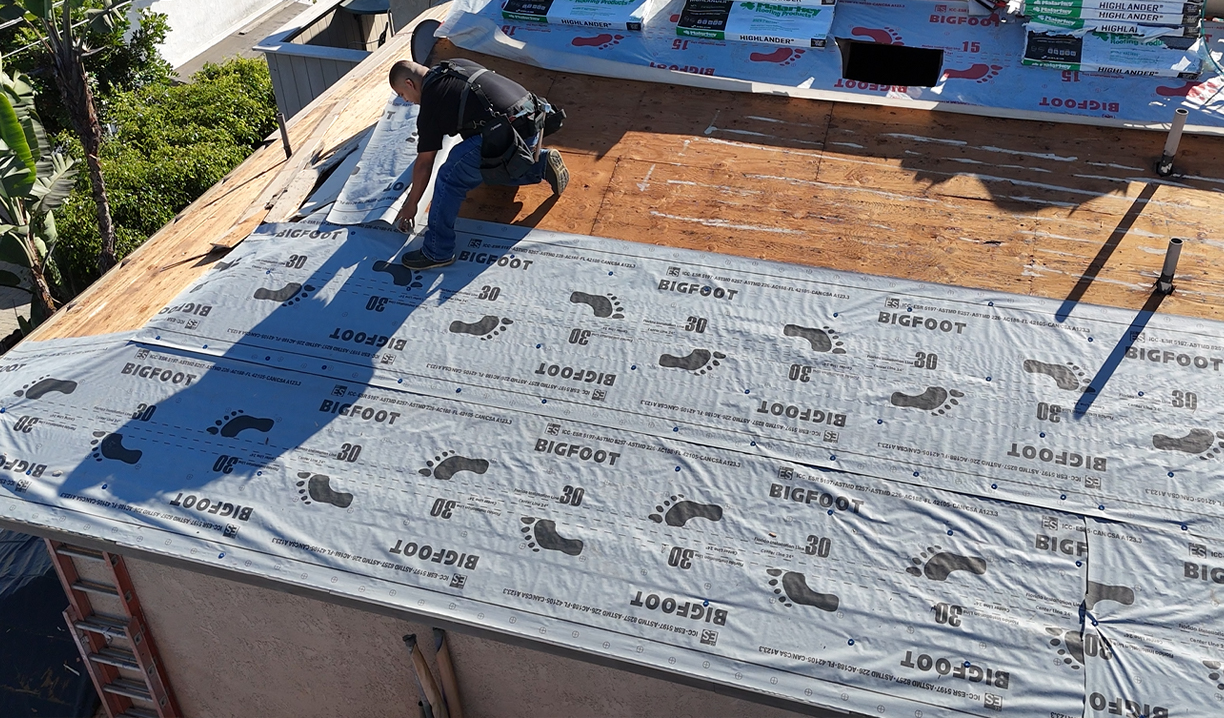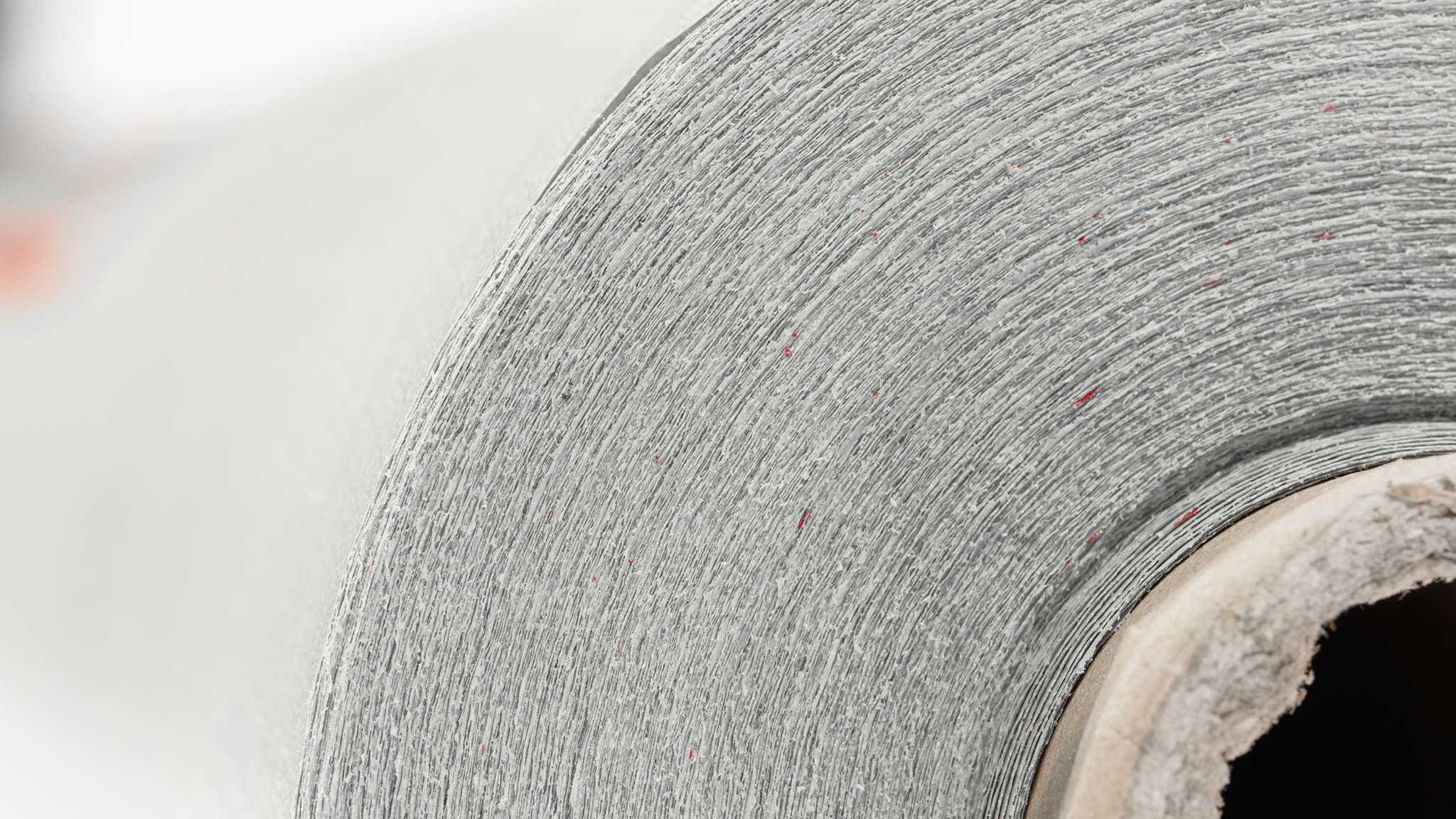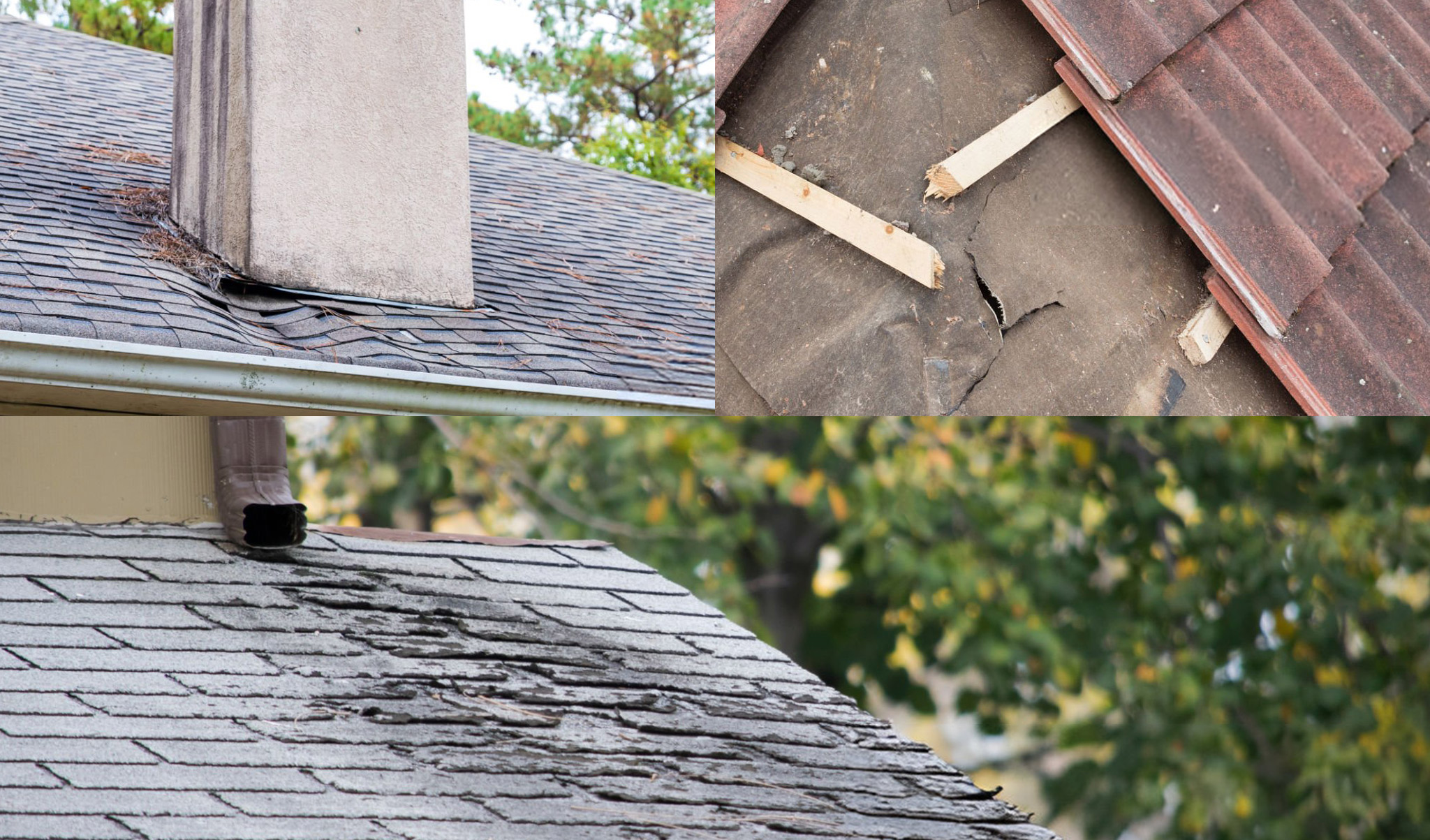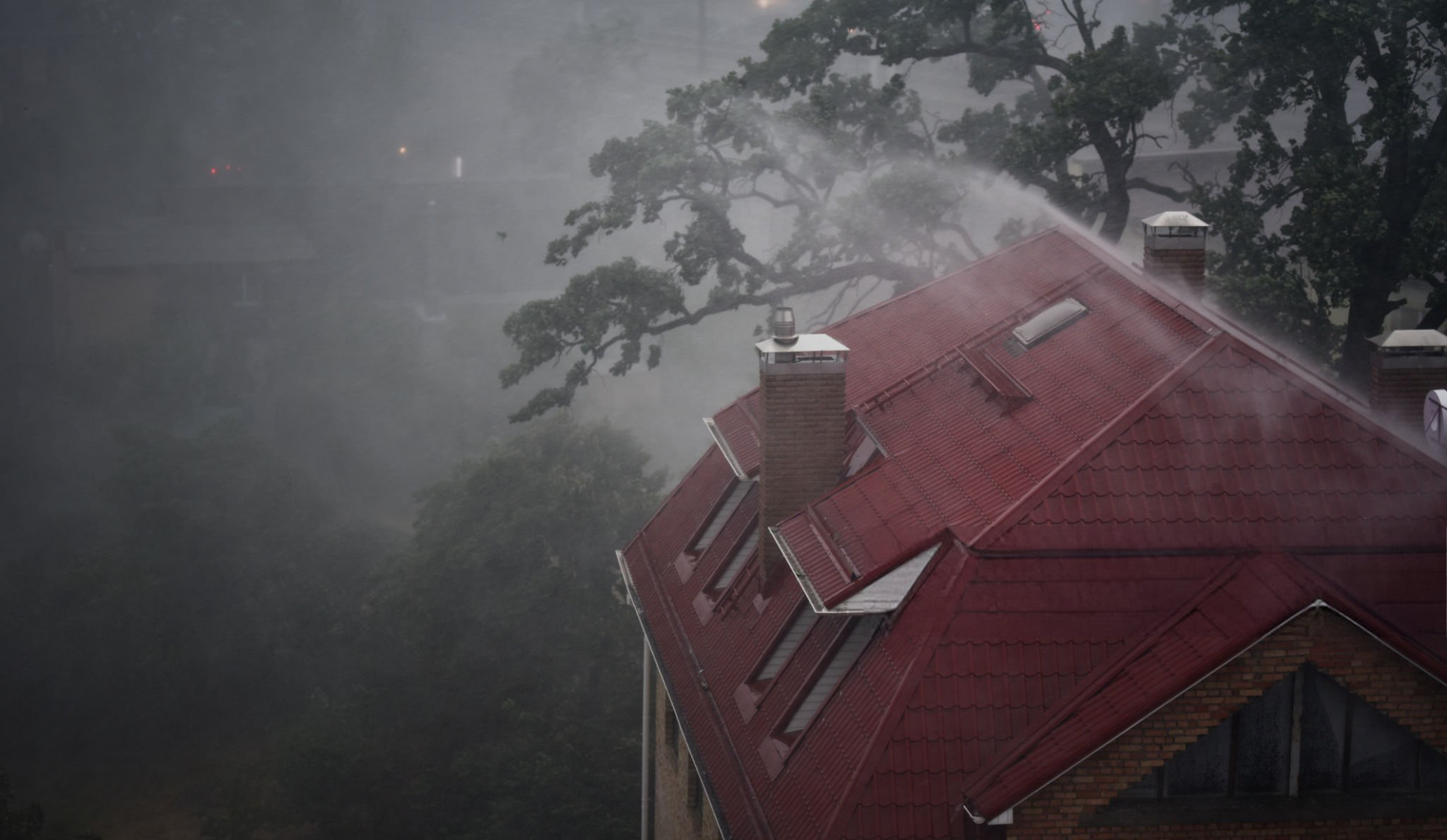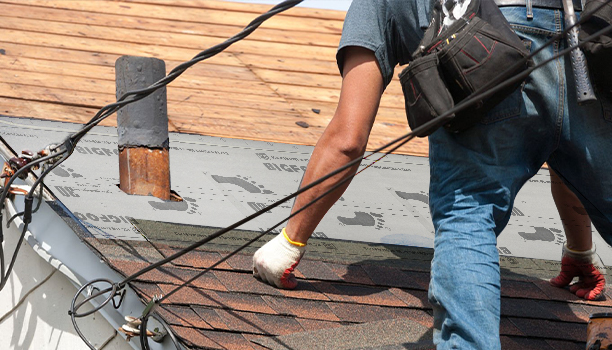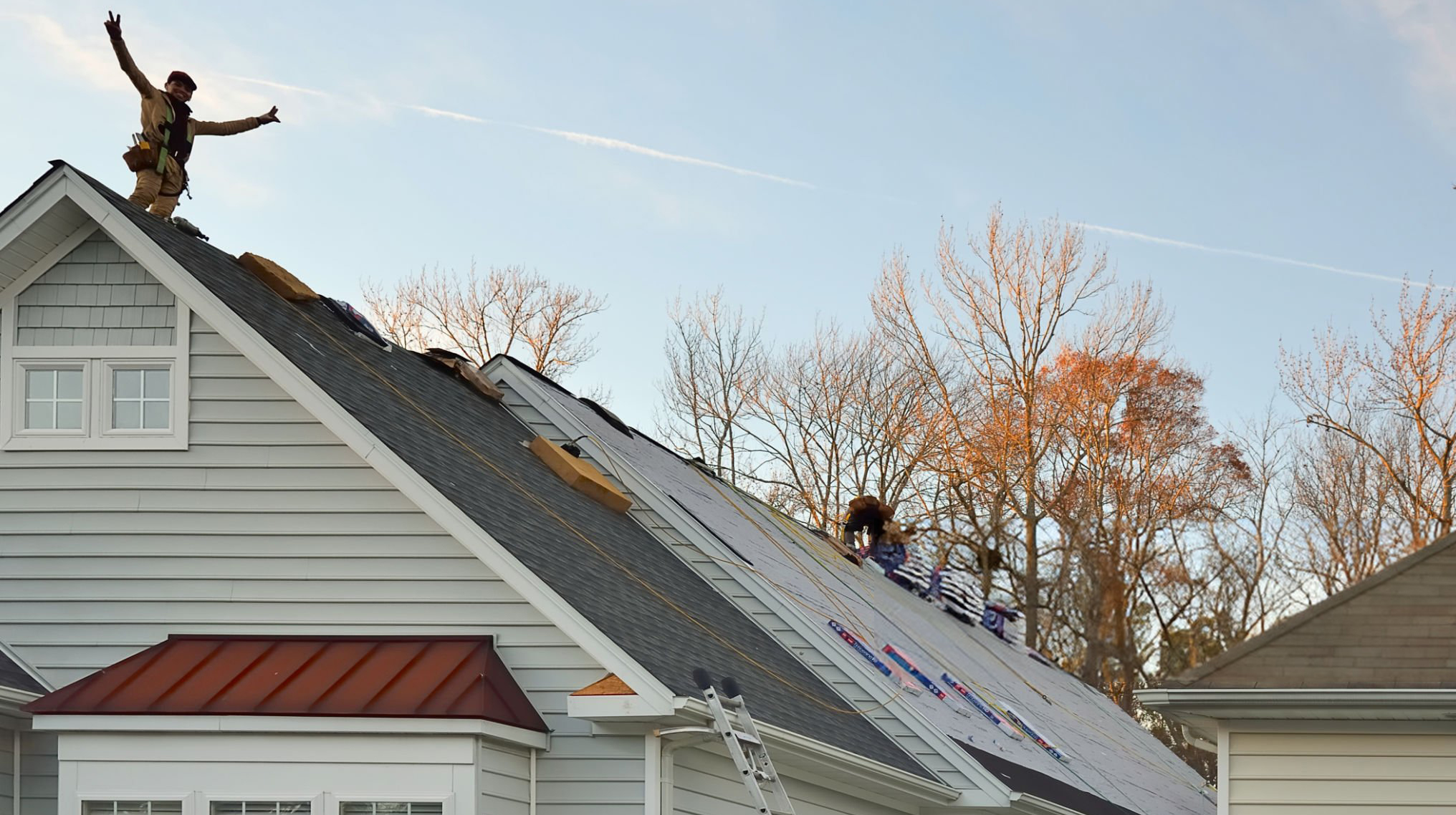Roof Synthetic Underlayment: The All - Around Protector of Building Roofs
In today's constantly evolving construction industry, roof synthetic underlayment, as an innovative building material, is providing
all - round protection for various building roofs with its excellent performance and diverse advantages, becoming the focus of
attention in the construction field.
From the Perspective of Material Properties
Roof synthetic underlayment is made from advanced polymer materials and special formulas, featuring outstanding weather resistance.
Whether it is exposed to the sun for a long time, battered by rainstorms, blizzards, or facing extreme temperature changes between
severe cold and heat, it can maintain stable performance and is not prone to aging, cracking, or deformation. For example, the synthetic
underlayment products of BIGFOOT, after rigorous laboratory - simulated environmental tests, can still maintain good waterproof and
tensile properties under simulated extreme climate conditions for consecutive years.
Meanwhile, the waterproof performance of synthetic underlayment is extremely excellent. Its molecular structure is dense, effectively
blocking the penetration of external moisture such as rainwater and snowmelt, forming a solid waterproof barrier. Compared with
traditional waterproof felts, the waterproof effect of synthetic underlayment is more durable and reliable, greatly reducing the risk
of roof leakage.
From the Perspective of Functional Applications
In terms of thermal insulation, roof synthetic underlayment plays an important role. It can effectively block the heat transfer between
indoor and outdoor environments, reducing the heat influx in summer and heat loss in winter, helping buildings achieve better energy
- saving effects.
From the Perspective of Construction and Installation
The installation process of synthetic underlayment is relatively simple and quick. It is lightweight, facilitating handling and construction,
and greatly reducing the labor intensity of construction workers. Moreover, synthetic underlayment is usually installed by self - adhesive
or splicing methods, eliminating the need for complex construction tools and techniques, and effectively shortening the construction
period. When using synthetic underlayment for roof construction, the construction time is reduced by one - third compared to traditional
materials, improving the overall project progress.
At the same time, the flexibility and plasticity of synthetic underlayment enable it to adapt to various roof shapes and structures. Whether
it is a flat roof, pitched roof, or complex irregular - shaped roof, it can achieve a perfect fit, ensuring construction quality and effectiveness.
From the Perspective of Environmental Protection and Sustainability
With the increasing emphasis on environmental protection concepts in the construction industry, the advantages of roof synthetic
underlayment in environmental protection have also received much attention. Many synthetic underlayments are made from recyclable
materials, meeting the requirements of green buildings. After their service life ends, they can be recycled and reused, reducing
environmental pollution. Moreover, the long service life of synthetic underlayment also means reducing the replacement frequency of
building materials, indirectly reducing resource consumption and the generation of construction waste.
Construction experts say that roof synthetic underlayment, with its unique material properties, rich functional applications, convenient
construction and installation, and good environmental performance, is gradually becoming the first - choice material for building roof
protection. With the continuous advancement of technology, it is believed that roof synthetic underlayment will bring more innovation
and development to the construction industry, creating a safer, more comfortable, and environmentally friendly building space for people.
2025-01-22
DETAIL

Roof Synthetic Underlayment: Providing Customized Protection for Different Roof Types
In today's construction industry, which is constantly in pursuit of innovation and progress, roof synthetic underlayment, as a key
building material, is providing better protection for various types of roofs with its excellent performance and diverse applications.
Flat Roofs
For flat roofs, waterproofing is of primary importance. Recently, in many commercial and residential projects, TPO (Thermoplastic
Olefin) synthetic underlayment has become a popular choice for flat roof waterproofing. TPO synthetic underlayment features
excellent weather resistance, UV resistance, and seamless welding properties. It can effectively prevent rainwater from seeping in
and extend the service life of flat roofs. For example, in a large commercial complex project, TPO synthetic underlayment was used
as the waterproof layer of the flat roof. The construction process was simple and quick, and in subsequent use, it withstood the tests
of many heavy rains, providing reliable waterproof protection for the interior space of the building.
Pitched Roofs
Pitched roofs place more emphasis on drainage and ventilation performance. Waterproof and breathable membranes, a type of
synthetic underlayment material, are playing a significant role in the pitched roof field. It can not only prevent rainwater from
intruding but also allow the water vapor inside the roof to escape smoothly, maintaining the dryness and stability of the roof
structure. In a mountainous tourist resort project, the pitched roofs of wooden houses used waterproof and breathable membranes
as underlayment. This well adapted to the humid and rainy climate in the mountainous area, avoiding problems such as wood decay
and mildew caused by water vapor accumulation. At the same time, it also provided a more comfortable and healthy indoor environment
for the residents.
Special - shaped Roofs
For some special - shaped roofs, such as circular roofs or irregular - shaped roofs, the new self - adhesive synthetic underlayment
shows unique advantages. This underlayment material has good flexibility and plasticity, enabling it to closely adhere to various
complex roof shapes and achieve seamless coverage. In an art exhibition hall project, its unique circular roof used self - adhesive
synthetic underlayment. Not only was the construction difficulty greatly reduced, but also a perfect appearance was achieved,
adding an artistic aesthetic to the overall building.
Building material experts say that with the continuous development of technology, roof synthetic underlayment will continue
to be innovated, providing more accurate and efficient solutions for various roof types and promoting th construction industry
to develop in a more safe, environmentally friendly, and aesthetically pleasing direction.
2025-01-21
DETAIL

Compatibility of Roofing Materials: The Key to Ensuring Roof Quality
In the field of construction engineering, the construction of the roofing system is crucial, combining both scientific and artistic aspects.
Its quality affects the overall performance, durability, and comfort of the building. The compatibility of roofing materials is a core factor
determining the quality of the roofing system and is worthy of in-depth discussion.
Key Points and Importance of Compatibility
It covers multiple aspects including physical and chemical properties and plays a decisive role in the performance of the roofing system.
· Physical Properties: The dimensional stability of materials is important. When environmental factors change, different materials will have
different degrees of expansion and contraction deformation. If they are not compatible, it is easy to cause extrusion and separation, which
will damage the integrity of the structure and lead to problems such as cracking and leakage. The strength and load-bearing capacity of
materials should be matched, and the anti-puncture and anti-tear properties also need to cooperate to resist external mechanical damage
and ensure the protective function.
· Chemical Properties: Chemical compatibility cannot be ignored. Incompatible materials are prone to chemical reactions during
long-term contact, resulting in material aging and deterioration. For example, when metal is adjacent to materials containing
corrosive components, it is easy to rust, which affects the service life and aesthetics of the roof.
Only by achieving good compatibility in all aspects can a stable, durable, and efficient roofing system be constructed to provide
reliable protection for the building.
Compatibility Performance of Different Materials
· Asphalt Shingles and Supporting Materials
Asphalt shingles are used on the roofs of residential buildings and the like. They are economical, convenient for construction, and have
diverse appearances. When paired, the underlayment materials should be flat and adherent to avoid installation problems of asphalt
shingles and ensure their stability. In terms of waterproofing, the two complement each other to form a waterproof system to cope with
bad weather and keep the interior of the roof dry. In terms of wind resistance, good bonding adhesion can make asphalt shingles stable
in windy weather and ensure the structural safety of the system.
· Metal Roofs and Related Materials
Metal roofs are used in industrial, commercial and other buildings and have obvious advantages. The thermal conductivity of thermal
insulation materials should match that of metal roof materials. Moisture-proof materials need to adhere to the bottom surface to form
a moisture-proof barrier to prevent rusting and damage. Sealing materials also need to bond well with the metal to ensure the sealing
of gaps and the integrity of the overall system.
· Clay Tiles and Cooperative Materials
Clay tiles have cultural connotations and are often used on the roofs of traditional-style buildings. The base materials should bear and
distribute their own weight. Waterproof cooperative materials fill the gaps to build a waterproof defense line, integrating aesthetic and
practical functions. Buffer materials can also absorb impact forces to reduce the risk of clay tiles breaking and ensure the stability of the
system.
Promotion of the Industry Development
The research and application of compatibility have a positive impact on the building roofing industry.
· Architectural Design
Designers will select compatible material combinations according to the function, environment, and aesthetics of the building to optimize
the performance of the roofing system and meet diverse needs.
· Construction Process
The construction team will construct according to the characteristics of compatibility, accurately install and combine materials, transform
the advantages into actual performance, create high-quality projects, and reduce later costs.
· Material Enterprises
It prompts enterprises to increase their investment in research and development, explore new materials, optimize performance, develop
better products, promote technological and product upgrades in the industry, and provide more high-quality material choices.
With the deepening of research and the progress of technology, future roofing systems will rely on more reasonable material
combinations to improve quality, durability, and functionality, helping the sustainable development of the construction industry
and serving people's lives and the development of the social economy.
2025-01-21
DETAIL

Exploring Synthetic Roofing Underlayments: New Breakthroughs in Functional Materials
In the long journey of the continuous development of materials science, synthetic roofing underlayments, as an emerging and highly
promising material, are gradually coming into the public eye and have triggered extensive attention and application changes in
numerous roofing-related fields, becoming a hot topic within the industry.
The development of synthetic roofing underlayments can be traced back to the middle of the last century. At that time, with the vigorous
rise of the chemical industry and the gradual deepening of materials science research, researchers began to explore the use of synthetic
techniques to create roofing liner materials with better performance to meet the growing and diverse needs of the roofing industry.
The emergence of synthetic roofing underlayments was largely to make up for the many deficiencies of traditional roofing underlayments.
Traditional roofing underlayments have long been constrained by their own material properties and faced numerous thorny problems. For
example, under the influence of external environmental factors such as exposure to wind, sunlight, temperature changes, and humidity
fluctuations, traditional roofing underlayments are prone to material aging, becoming brittle, and losing elasticity, which in turn leads to
a significant reduction in their original functions like protection, cushioning, and isolation. Moreover, as the usage time increases,
traditional roofing underlayments often need to be replaced frequently, which undoubtedly brings higher cost burdens and a lot of
inconvenience to users.
In sharp contrast, synthetic roofing underlayments exhibit many remarkable advantages.
In terms of material stability, synthetic roofing underlayments have excellent weather resistance. Whether they are exposed to the
scorching sun for a long time, in a cold and low-temperature environment, or facing complex climatic conditions such as wet and
rainy weather, they can maintain the stability of their chemical structures and ensure that their performance is not greatly affected.
This is due to their advanced synthetic processes and carefully selected raw materials, which endow them with a natural ability to
resist environmental erosion and enable them to play a reliable role for a long time, greatly extending their service life.
In terms of physical properties, the strength performance of synthetic roofing underlayments is quite remarkable. They possess relatively
high tensile strength, which means that during the installation process, even when subjected to external forces such as pulling and
bending to a certain extent, they are not prone to tearing or damage. For construction workers, this greatly reduces the construction
difficulty and enables them to complete laying and other related work more efficiently. Meanwhile, in the subsequent use stage, it also
reduces the trouble of maintenance or replacement due to accidental damage, ensuring the continuity and stability of use.
Furthermore, the versatility of synthetic roofing underlayments makes their application scenarios extremely extensive. In the roofing field
of the construction industry, they can be used as waterproof underlayments for roofs, effectively blocking rainwater penetration with their
tight structures, and can also serve as heat-insulating and sound-insulating underlayments in roof structures to create a comfortable
indoor environment. In the transportation field, when applied to the roof parts of vehicles such as automobiles, trains, and airplanes, they
can play a certain role in protection and heat insulation. They can also be used as seat underlayments inside vehicles to provide
passengers with a pleasant riding experience through good elasticity and comfort. And during cargo transportation, they can be used as
cushioning underlayments on the roof to protect the goods from damage caused by vibration and collision. In the field of electronics
and electrical appliances, they can provide isolation and protection for some precision electronic components placed in the roofing
environment, preventing electrostatic, dust and other factors from damaging the components and ensuring the normal operation of
electrical equipment.
In addition, as the concept of environmental protection has been deeply rooted in people's hearts around the world, the research and
development and production of synthetic roofing underlayments have increasingly focused on green and sustainable development.
Many of the raw materials used in synthetic roofing underlayments are recyclable, and the production processes are constantly being
improved in the direction of low energy consumption and low pollution, minimizing the impact of this material on the environment
throughout its life cycle, which conforms to the current and future development trends.
It can be said that synthetic roofing underlayments, with their excellent performance, wide range of applications and environmental
protection characteristics, are gradually becoming a powerful substitute for traditional roofing underlayments, playing an increasingly
important role in numerous industries and injecting new vitality into the development of the materials field. There will surely be broader
application prospects waiting for people to further explore and discover in the future.
2025-01-20
DETAIL

Roof Synthetic Underlayment: Easy Installation, Revolutionizing Roof Waterproofing Construction
Roof synthetic underlayment is quietly transforming the traditional model of roof waterproofing construction with its
outstanding performance in installation convenience.
The roof synthetic underlayment is ingeniously designed. Its lightweight material significantly reduces the handling
burden on construction workers. In the roof waterproofing operations of multi - storey or high - rise buildings,
transporting materials is time - consuming and labor - intensive. However, the lightweight nature of the roof synthetic
underlayment enables workers to easily transport it to the designated location, effectively saving labor and time and
enhancing construction efficiency.
Each roll of the roof synthetic underlayment has a large coverage area, which greatly reduces the number of rolls
and the number of splicing times during laying. Compared with traditional roof underlayments, using roof synthetic
underlayment products can significantly shorten the preparation and connection time. Meanwhile, it reduces the
risk of leakage caused by excessive splicing, strongly safeguarding the overall quality of the roof waterproof layer.
High flexibility is also one of its remarkable features. It can easily conform to complex roof structures such as ridges,
eaves, and internal and external corners without the need for complicated cutting and bending. Even in the construction
of uniquely - shaped roofs, such as arched or spherical roofs, it can closely adhere like a soft cloth, reducing material
waste and construction difficulty while taking into account the aesthetics and integrity of the waterproof layer.
With the advantages of being lightweight, having a large coverage area, and high flexibility, the roof synthetic
underlayment has set a new industry benchmark in installation convenience. As the construction industry's demand
for efficient construction grows, the roof synthetic underlayment is expected to stand out in more construction
projects, bringing a brand - new revolution to roof waterproofing projects.
2025-01-18
DETAIL

Achieving Lightweight and Efficient Installation, Facilitating the Development of Multiple Sectors
In recent times, within a multitude of engineering construction and industrial application scenarios, a novel type of liner has been
instigating a revolutionary trend by dint of its attributes of lightweight and efficient installation. It has exerted significant positive
influences on various industries and has emerged as a focal topic that has garnered substantial attention within the industry.
Historically, in the realm of construction practices, the selection and installation of liner materials have invariably posed challenges for
numerous projects. Traditional liners were characteristically bulky and heavy. For instance, certain conventional rubber liners or fabric
composite liners demanded substantial manpower and material resources during the transportation phase. They frequently
necessitated the collaboration of multiple personnel or even the assistance of mechanical equipment for handling, thereby
undeniably augmenting the complexity of preparatory work and escalating the cost outlay. Moreover, the installation of these
hefty materials was fraught with difficulties. Specifically, in areas characterized by spatial constraints, at elevated heights, or
possessing irregular geometries, construction workers were compelled to expend copious amounts of time and energy on
adjusting positions and effectuating the laying process, consequently resulting in a rather low level of efficiency.
Nevertheless, this newly introduced type of liner has completely transformed this state of affairs. Consider, for instance, the
construction project of a large-scale modern warehousing center. It was imperative to install liners on the ground to guarantee
a moisture-proof environment for the storage of goods and to ensure the wear resistance of the ground surface. The construction
team opted for this new type of liner, whose weight was merely approximately one-third of that of traditional liners with comparabl
functions. Upon the delivery of the materials to the construction site, workers were able to effortlessly transport them to the
designated locations, and a single individual could manage the movement of liners covering small areas, thereby effecting a
significant reduction in labor costs.
During the installation procedure, the new type of liner exhibited unparalleled efficacy. Its material boasts excellent plasticity, enabling it
to be deftly cut in accordance with the actual shape and dimensions of the site, with edges that are both neat and capable of seamless
splicing. Construction workers are merely required to adhere to the design blueprint, simply laying and joining the individual pieces of
the new type of liner successively, and subsequently employing specialized sealants or connecting components to expeditiously complete
the installation work across a broad area. Initially, it was projected that the installation would span several days; however, in actuality, it
was accomplished within less than two days, thereby securing precious time for the overall construction progress of the warehousing
center.
It is worthy of note that the advantages proffered by the lightweight and efficient installation of this new type of liner have also permeated
into numerous other domains. In agricultural irrigation projects, the lightweight nature of this new type of liner renders it convenient for
laying within irrigation channels, thereby facilitating the prompt completion of anti-seepage work and curtailing the wastage of water
resources. In chemical production facilities, the new type of liner utilized for safeguarding the ground and equipment can be swiftly installed
in position, thereby erecting a robust safety protection framework for ensuring safe production.
With the continuous innovation and progression of technology, the performance of this new type of liner remains in a state of perpetual
optimization. The merit of lightweight and efficient installation is anticipated to shine brightly in a greater number of engineering projects
and industrial applications, persistently contributing to the impetus for the high-quality development of diverse industries. We are also
looking forward with anticipation to its creation of additional value and possibilities in the future.
2025-01-17
DETAIL

Methods for Judging the Replacement of Synthetic Underlays: Timely Detection Ensures Safety
Recently, with the widespread application of synthetic underlays in construction, industry and other fields, how to determine
whether they need to be replaced has become a focus of attention for many users. Correctly judging the replacement time of
synthetic underlays is crucial for ensuring the normal operation and safety of facilities.
Visual Inspection is the First Step
When inspecting synthetic underlays, the first thing is to check whether there is any damage on the surface. Professionals
point out that when carefully examining the surface of the synthetic underlay, special attention should be paid to the
appearance of cracks, holes or tears. For example, for the synthetic underlay used on the roof, if the crack width exceeds
1 - 2 millimeters or the crack length is relatively long, more than 30 centimeters, it may affect its waterproof performance
and replacement may need to be considered. At the same time, the phenomenon of bulging cannot be ignored. Bulging
may be caused by water vapor accumulation under the underlay or incomplete air discharge during installation. If the area
of the bulge is large, accounting for more than 5% of the roof area, or the bulge is increasing continuously, it indicates that
the integrity of the underlay has been damaged, and its waterproof, heat - insulation and other functions may be greatly
reduced, so it should be replaced in a timely manner. In addition, the color change of the underlay is also an important
observation point. If there is fading, discoloration, especially uneven color change, or the underlay loses its original luster,
becomes dull and the material becomes brittle, this may be the result of material aging caused by long - term exposure to
sunlight and ultraviolet radiation, and replacement may also need to be considered.
Performance Testing is Key
In addition to visual inspection, performance testing is equally crucial. In terms of waterproof performance testing, a simple
water - pouring test can be carried out to observe whether water can penetrate under the underlay. If water can penetrate
easily, it indicates that the waterproof layer of the underlay has failed. At the same time, use professional humidity detection
instruments to check the humidity under the underlay and inside the roof structure. If the humidity is significantly higher than
the normal range, such as the relative humidity exceeding 70%, it may mean that the waterproof function of the underlay has
problems and replacement is needed. In terms of heat - insulation performance evaluation, the heat - insulation performance
of the underlay can be initially judged by comparing the indoor and outdoor temperatures. If the indoor temperature is
significantly higher than the same period in previous years during hot weather, and the factors such as air - conditioner failure
have been excluded, it may be that the heat - insulation function of the underlay has declined. In addition, professional thermal
imaging cameras can also be used to detect the temperature distribution of the roof surface and the indoor ceiling. If the
temperature difference is found to be small, it indicates that the heat - insulation effect of the underlay is not good and
replacement may be required.
Service Life Consideration is Necessary
The service life of synthetic underlays is also an important factor in judging whether replacement is needed. Different types of
synthetic underlays have different nominal service lives. The nominal service life of ordinary polyvinyl chloride (PVC) synthetic
underlays may be about 10 - 15 years, while that of high - quality ethylene - propylene - diene monomer (EPDM) synthetic
underlays can reach more than 20 years. Even if there are no obvious signs of damage to the underlay at present, if it has
approached or exceeded its nominal service life, its performance changes should be closely monitored, and preventive
replacement of the underlay can be considered to avoid potential problems. At the same time, if the underlay is exposed to
harsh environments for a long time, such as being eroded by salt spray near the sea, polluted by chemical substances in
industrial pollution areas, or in areas with high ultraviolet radiation, its actual service life may be shorter than the nominal life.
For example, for buildings near the sea, due to the corrosive effect of salt in the salt spray on the underlay material, the service
life of the underlay may be shortened by 30% - 50%. In such cases, it should be judged in advance whether replacement is
needed according to the actual situation.
Experts remind that the inspection and replacement of synthetic underlays should be carried out regularly, and it is best to be
operated by professionals to ensure the quality of inspection and replacement and to guarantee the safety and stable operation
of the facilities.
2025-01-17
DETAIL

The New Shield for Roofs: Synthetic Underlayment
In roof protection, waterproofing is a crucial aspect. For a long time, felt underlayment has been widely used, but its
shortcomings have become increasingly apparent. In the face of severe weather such as heavy rainfall, traditional felt
underlayment has insufficient waterproofing capabilities and is difficult to effectively resist water intrusion. Moreover,
it is greatly affected by environmental factors, has poor durability, and is prone to aging and damage.
At this time, synthetic underlayment has come into the spotlight as a superior alternative. Taking the Bigfoot series of
synthetic underlayment from ABP Company as an example, its excellent performance has made it highly favored.
In terms of waterproof performance, the synthetic underlayment is truly "waterproof". Its unique materials and structure
make it like an airtight barrier that can efficiently isolate moisture. Even if the roof shingles are damaged, it can still hold
the line, greatly reducing the risk of water leakage and building a solid waterproof fortress for the roof.
The ultraviolet resistance of the synthetic underlayment is also a major highlight. Compared with traditional felt underlayment,
it has a stronger resistance to ultraviolet rays. The performance of traditional materials will be greatly reduced under
long - term ultraviolet irradiation, while the synthetic underlayment can function stably and has a significantly extended
service life.
In terms of construction, the synthetic underlayment also has great advantages. For steep - slope roofs, it can provide a
good anti - slip surface to ensure the safety of construction workers. At the same time, its lightweight characteristic not
only reduces the overall pressure on the roof but also facilitates transportation and installation, effectively saving labor
and time costs. In addition, it has excellent tear - resistance. It is not easy to be damaged accidentally during installation
and use, reducing material waste and further ensuring the roof protection effect.
With all these advantages, synthetic underlayment has been widely used in the fields of residential and commercial
building roofs. Whether it is a new construction project or an old roof renovation, it shows great potential. When
choosing roof protection materials, synthetic underlayment is undoubtedly a high - quality option worth considering,
building a solid defense line for your roof.
2025-01-16
DETAIL

Riding the Wave of Development and Breaking Through Challenges: Dynamics and Prospects of Key Links in the Construction Field
Against the backdrop of the booming global construction industry, there is a field that, though not often in the spotlight, plays a vital role
in ensuring the stability, waterproofing, and overall performance of building roofs. It is currently in a process of continuous evolution and
development.
Market Development Trends: Expansion in Scale and Diversification of Demand
In recent years, the relevant market has shown a steady expansion trend. On the one hand, the continuous urbanization construction and
renovation projects of old buildings in various regions have continuously generated a demand for corresponding products. Whether it's
the numerous commercial buildings in bustling cities, various residential buildings in vast rural areas, or the numerous industrial factories
dotted around, all rely on the support of such products.
In regions where the construction industry is highly developed, people have extremely high requirements for the quality of residential and
commercial buildings, and correspondingly, their expectations for the performance of relevant products have also risen. Construction
projects in these areas often tend to choose high-end products that possess excellent durability and can cope with complex climatic
conditions to ensure that the building roofs remain intact during long-term use.
Product Pattern: Rich in Variety and Each with Its Own Advantages
Currently, the relevant products present a diversified and rich pattern. Various products, relying on their unique performance advantages,
are able to demonstrate their capabilities in different building application scenarios.
Certain traditional products have a profound historical background and mature production processes, with relatively low costs. This
enables them to still maintain a certain market share in numerous low- and medium-end construction projects with limited budgets.
Although compared to some new products, they may fall slightly short in high-end performance, for small residential buildings, simple
warehouses, and other buildings where the requirements for roof performance are not particularly stringent, they can provide basic and
reliable waterproof functions, undoubtedly making them an economical choice.
There is another type of product that is renowned for its outstanding weather resistance, chemical corrosion resistance, as well as
excellent elasticity and tensile resistance. Whether facing the scorching sun, torrential rain, or complex environments, it can demonstrate
strong tolerance to ensure the stability and safety of the roof structure. For this reason, large industrial factories, warehousing and logistics
centers, and commercial buildings with extremely high requirements for roof durability often choose this type of product as their first choice,
safeguarding the long-term use of the buildings.
Industry Transformation Trends: Environmental Protection and Intelligence Leading the Future
With the increasing emphasis on environmental protection, energy conservation and emission reduction, and building intelligence around
the world, this field is also being caught in a profound wave of transformation. Green environmental protection and intelligent functions
have become the two core trends in its development.
In terms of environmental protection, more and more enterprises are actively responding to the call for sustainable development and are
committed to researching and developing relevant products made from recyclable and renewable materials. For example, some enterprises
have begun to attempt to use new environmentally friendly materials to replace traditional raw materials. The products produced not only
possess the environmental protection characteristics of being degradable and renewable but also significantly reduce the impact on the
environment throughout their entire life cycle. Meanwhile, enterprises also focus on optimizing production processes and improving energy
utilization efficiency during the production process, fully implementing the environmental protection concept from the production source to
product use and finally to disposal, striving to make relevant products an important part of green buildings.
Challenges: Forging Ahead and Seeking Breakthroughs
The frequent fluctuations in the prices of raw materials have brought significant cost control challenges to enterprises. Since the
production of relevant products relies on multiple raw materials, and the prices of these raw materials are affected by many factors
such as global market supply and demand relationships and geopolitics, they often experience unstable fluctuations. This causes
enterprises to face many uncertainties when formulating product prices and planning production scales, and their profit margins
are often squeezed.
However, it is precisely these challenges that have driven enterprises in the industry to actively seek breakthroughs. They strengthen
in-depth cooperation with raw material suppliers, sign long-term and stable supply agreements, and jointly explore solutions for the
stability of raw material supply and cost optimization. At the same time, enterprises also enhance exchanges and cooperation, form
industry alliances or participate in industry association activities, jointly respond to the complex and changing policy environment, share
technological research and development achievements, and work together to promote the entire field to develop in a healthier and more
sustainable direction.
2025-01-16
DETAIL

Innovative Shield: Fortifying Building Defenses in Extreme Cold
With the continuous expansion of the global construction industry into cold regions, extreme cold environments pose numerous severe
challenges to building structures. As a crucial line of defense for buildings against the external environment, the protective performance
of roofs is severely tested under low - temperature conditions. Recently, a roof synthetic gasket specifically designed for extreme cold
environments has made a stunning debut, presenting a brand - new solution to this problem.
Extreme cold regions frequently experience harsh weather conditions such as low temperatures, heavy snowfall, and strong winds.
Traditional roof gasket materials exhibit significant disadvantages in such environments. Low temperatures can cause the materials to
shrink and become brittle, leading to cracks in the roof, severely compromising its sealing and waterproofing properties. The heavy
pressure of snowstorms can easily damage vulnerable gaskets. Once the gasket fails, the interior of the building will face issues such
as water leakage and reduced insulation performance. This not only affects the living comfort but may also cause long - term damage
to the building structure.
Through innovative material formulations and advanced manufacturing processes, relevant synthetic gaskets have successfully overcome
these difficulties. In extremely cold temperatures, they can always maintain good flexibility and ductility. Even when repeatedly compressed
by heavy snow, they can quickly return to their original state, always closely adhering to the roof structure, ensuring excellent waterproofing,
windproofing, and insulation effects.
Judging from extensive practical application feedback, numerous buildings in extremely cold regions that have adopted this synthetic
gasket have demonstrated excellent protective performance when facing extreme weather. Compared with surrounding buildings using
traditional gaskets, these buildings effectively avoid common problems such as roof water leakage and insulation layer damage. The
indoor temperature can be stably maintained, greatly enhancing the safety and comfort of living and using the building.
With the continuous deepening of global development in cold regions and the increasing demand for building safety and comfort in
extreme environments, the application prospects of this synthetic gasket are extremely broad. Whether it is for civil residential buildings,
commercial buildings, or industrial facilities, it will become a solid shield for buildings in extreme cold environments, strongly promoting
the sustainable development of the construction industry in cold regions and creating a safer and more comfortable living and working
space for people in frigid zones.
2025-01-15
DETAIL

New Roof Synthetic Liner: Say Goodbye to Leakage and Aging Troubles
In the field of construction, the quality and durability of roofs have always been the focus of attention. Due to the limitations
of its materials and structure, the traditional asphalt roof often brings many troubles to users, such as frequent leakage, roof
mildew and aging. However, the new upgrade of the currently popular roof synthetic liner provides an effective solution to
these problems.
The Disadvantages and Troubles of Traditional Asphalt Roofs
The traditional asphalt roof is mainly composed of organic substrates impregnated with asphalt, such as paper, and sometimes
covered with fine minerals or fillers on the surface. This material is not only heavy, bringing an additional burden to the building
structure, but also has poor stability. Under the influence of long - term climate change, the asphalt layer is prone to gradual
degradation, which in turn leads to water leakage, making the roof leakage problem occur frequently. This has brought great
inconvenience and economic costs to the lives of residents and the maintenance of buildings.
The unique structure of the synthetic liner solves the problems
In sharp contrast, the newly upgraded roof synthetic liner nowadays shows excellent performance. It adopts a multi - layer
structure design, including a waterproof membrane, reinforcing fibers, and an anti - slip surface layer. This unique structure
makes the synthetic liner relatively thin, but its internal structure is compact, with excellent toughness and strength. Its
waterproof membrane can strongly prevent water molecules from entering, fundamentally solving the hidden danger of roof
leakage; the reinforcing fibers provide strong support for the liner, making it as tough as a rock and not easy to be damaged;
the anti - slip surface layer not only increases the safety of construction, but also further improves the overall stability of the
roof.
In practical applications, even when exposed to harsh climatic conditions for a long time, such as heavy rain, strong winds,
high temperatures, and low temperatures, this roof synthetic liner can still remain strong and durable, showing good
adaptability and stability. After strict testing and verification in actual projects, its service life far exceeds that of traditional
asphalt felt, greatly reducing the frequency of roof repairs and replacements, and saving users a lot of time and cost.
At present, many well - known enterprises in the market have launched their respective roof synthetic liner products, which
have been widely applied and recognized. When construction enterprises and property owners choose roof materials, they
might as well consider this new type of synthetic liner to improve the quality and service life of the roof and enjoy a more
high - quality construction experience.
2025-01-15
DETAIL

BIGFOOT Synthetic Cushion: A Wise Choice for Long-Term Investment
Recently, with the continuous innovation and development in the field of building materials, the BIGFOOT synthetic cushion
has gradually become a popular choice for numerous projects, thanks to its unique performance advantages.
Although the initial investment in the BIGFOOT synthetic cushion is slightly higher compared to traditional cushions, its
outstanding durability gives it incomparable advantages during long - term use. This synthetic cushion has an extremely
long service life, which greatly reduces the replacement frequency and saves a large amount of time and labor costs for
projects. At the same time, its maintenance requirements are extremely low, eliminating the need for frequent maintenance
work and further reducing operating costs.
Feedback from numerous customers who have used the BIGFOOT synthetic cushion shows that this product not only
performs excellently in terms of performance but also brings significant economic benefits. From a long - term perspective,
it is more cost - effective and can bring higher returns on investment for investors. Customers are highly satisfied with it
and have expressed that they will still give priority to considering the use of the BIGFOOT synthetic cushion in future
projects.
Industry experts analyze that the emergence of the BIGFOOT synthetic cushion provides a more efficient and economic
option for the construction industry. Looking ahead, this product is expected to occupy a larger share in the market and
strongly promote the further development of the industry.
2025-01-14
DETAIL



 BIGFOOT 15
Learn More
BIGFOOT 15
Learn More




 BIGFOOT 30
Learn More
BIGFOOT 30
Learn More




 BIGFOOT 180
Learn More
BIGFOOT 180
Learn More




 BIGFOOT HD
Learn More
BIGFOOT HD
Learn More





 BIGFOOT 15
BIGFOOT 15




 BIGFOOT 30
BIGFOOT 30




 BIGFOOT 180
BIGFOOT 180




 BIGFOOT HD
BIGFOOT HD










 Back
Back



